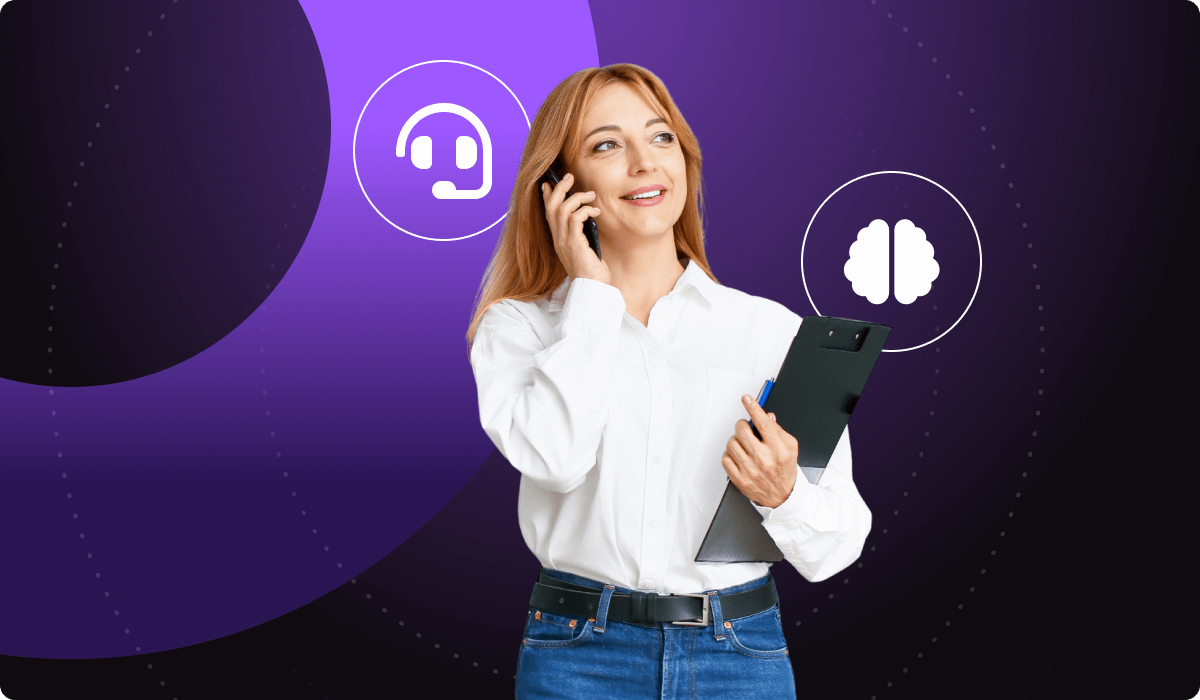Table of content
As with all communication, automated customer service has senders, receivers, messages and channels. Although in this case we’re not talking to a real person, there will be a response on the other end to keep the conversation going.
That said, the fact that a bot isn't actually a human could pose certain challenges when ensuring effective communication. But bots with conversational AI have features specifically designed to reduce friction when interacting with your customers and offer amazing seamless experiences.
“What if the chatbot doesn’t understand?”
A customer chats with a bot, sends an inquiry and after a few seconds they get one of these: “Oops, I don’t know how to answer this question.”
We all know this isn’t the best scenario, but that’s no reason to ignore it.
A chatbot with AI is ready for all potential chat scenarios. Its conversational engine has certain features to help people ask better questions and to help companies understand what customers are looking for. How does it do it? With evasive answers.
Evasive answers: What they are and how they work
An evasive answer is what the bot gives when
A) It doesn’t have the information the customer needs or an specific way to ask isn’t loaded on the platform.
B) The customer’s inquiry was inaccurate, too long or too ambiguous.
The conversational bot doesn’t have the information the customer needs or that specific way to ask isn’t loaded on the platform.
In these cases, Aivo’s solution lets you create evasive answers to apologize for the information gap and tell customers that the bot keeps on learning with each interaction. Go ahead and play around with a tone that fits your company’s communication style. You can write more formal evasive answers, or add emojis or gifs to create more amusing content.

Once the conversational engine has detected these unresolved inquiries, it’ll send them to the Training section. Let's set aside evasive answers and focus on this other topic for a second.
Training is a learning tool that'll help you discover cues about the information customers need and wasn’t considered before.

Here you’ll find a list of unresolved inquiries and how often they happened. You'll also be able to mark when the question is being reviewed, test how the bot responded to it, and add it to the knowledge base as a way to ask about an existing inquiry or directly create a new one.
This way, the next time someone has the same question, the bot will be ready to answer it right.
All right, let's get back to evasive answers...
The customer’s inquiry was inaccurate, too long or too ambiguous.
In this second scenario, evasive answers are designed to educate the customer and help them write their question better.
In our experience, we see three general types of inquiries that usually interfere with smooth bot communication.
1. Inquiries with more than 15 words. The virtual assistant loves questions that are short and sweet. When it comes across long inquiries, it’ll suggest simpler wording.

2. Inquiries with special characters only and no other words to add context to the question. In these cases, we’re talking about a bunch of exclamation points or question marks, isolated from text, or any other combination of symbols that don’t come with a sentence.

Maybe now you’re wondering: “Aren’t emojis special characters? What happens with them?”
Yes, that’s right. They're special characters, but the bot loves chatting with emojis and it understands them fine, even when the customer just sends a “;)”.
3. Inquiries that only have numbers, like licenses, phone numbers, card or ID numbers, etc. that weren't asked by the bot through a form. As with the other cases, the virtual assistant will try to guide customers so they understand how to optimize the wording of their questions.

Improving communication with your customers through bots with artificial intelligence
Evasive answers are here to refine interactions between your customers and the conversational bot. By educating them on the best way to write intents, the answer success rate grows, interactions are resolved more quickly and service times go down. In the end, everything works towards increasing customer satisfaction.
If you want to learn how conversational AI can improve your customer service experience, get in touch and talk to one of our specialists.




















